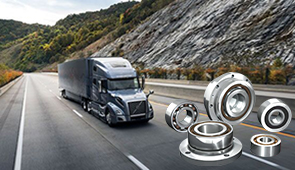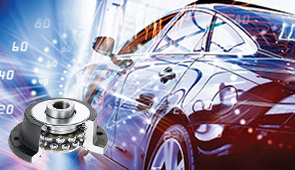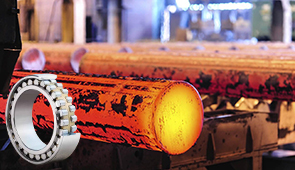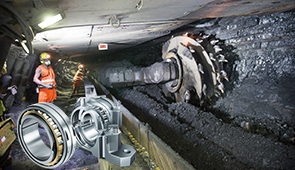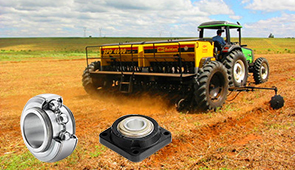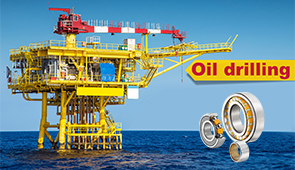The Ultimate Guide to Slewing Ring Bearings: Precision in Power Transmission
Slewing ring bearings are pivotal components in modern engineering, merging unmatched versatility with precision to facilitate rotational motion in heavy-duty applications. From towering cranes to wind turbines, these bearings enable the power transmission and mechanical efficiency required for smooth and reliable performance under demanding conditions. But what exactly makes slewing ring bearings so crucial? This comprehensive guide dives deep into their design, functionality, applications, and benefits. Whether you are an engineer, a project manager, or someone keen on understanding industrial machinery, this article will equip you with the essential knowledge to integrate and maintain slewing ring bearings effectively.
What are the applications of slewing bearings?
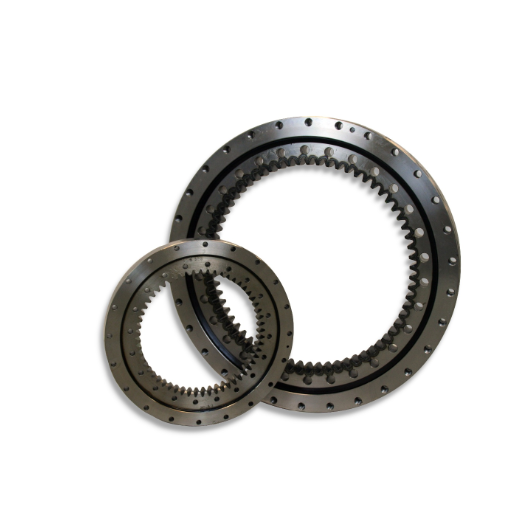
Industries that rely on slewing ring bearings
Slewing ring bearings are essential parts in many machines because of their ability to support and enable smooth rotation, along with enabling smooth axial, radial, and moment loads. One specific industry is construction, where these components are used in cranes, excavators, and tunnel boring machines. Slewing ring bearings assist equipment that performs lifting, digging, or revolving tasks under heavy loads and complex operational conditions.
The renewable energy sector heavily depends on slewing ring bearings, more specifically in wind turbines. Wind turbines depend on yaw and pitch slewing ring bearings to enable the turbine blades to adjust to a position that maximizes energy conversion. The turbines also require these bearings due to their precision and ability to function under severe weather conditions.
Slewing ring bearings are also used in the marine and offshore industries, in deck cranes, offshore drilling rigs, and ship-mounted systems. These examples highlight the importance of slewing ring bearings across multiple engineering domains, but it’s also worth noting the sturdy and corrosion-resistant designs. The harsh marine environments necessitate support for critical operations requiring high stability and flexibility.
Applications that require precision and heavy loads
Slewing ring bearings are critical in any industry where precision and extreme load handling a requirements. A clear example is in the material handling industry, which features large cranes and excavators. The ability of these bearings to support enormous axial and radial forces as well as tilting moments guarantees stability and safety when lifting and moving enormous loads. This makes them especially crucial in construction, mining, and port activities.
In the field of renewable energy, one of the most prominent applications is the wind turbine. Slewing ring bearings in wind turbines control the position of rotor blades and the orientation of the nacelle to optimize wind capture and maximize energy capture. These bearings provide the accuracy required to endure the changing weather and reduce elapsed wear over long periods of use, making wind energy systems trustworthy.
Slewing ring bearings are also essential for high-performance manufacturing systems and robotics. Industrial robots use these bearings for highly accurate motion control, both in assembly lines and automated production settings. The ring’s robust design equips industrial robots to endure repetitive, intense loading and sophisticated maneuvers while maintaining optimal performance. All of these applications underscore the importance of slewing ring bearings when accurate control and precise handling of large mechanical loads are required.
The role of slewing bearings in wind energy
Slewing bearings have an indispensable value concerning the operation and efficiency of wind turbines. These components are part of the yaw and pitch subsystems that control the alignment of the wind and the rotor blades. The turbine has to be positioned accurately to enhance energy capture and reduce the stress on structural components. Using smooth rotation, slewing bearings take care of this positioning.
Yaw bearings are responsible for the rotation of the nacelle (the central component containing all necessary turbine systems), which needs to be turned in the direction the wind is coming from. The yawing motion relies heavily on the turbine’s ability to withstand different wind speeds, directions, and the overall environment. For this operation, clear slewing bearings are made to withstand high axial and radial forces while keeping accepted stability and reliability criteria over time.
Pitch bearings, however, manage the movement of the turbine blades so that the blades can change their angles concerning the wind. This change is important in controlling how much energy is captured and minimizing the mechanical stress during very windy conditions. The very action of slewing bearings, and their ability to control the rotational movement of the blades relative to the vertical axis, enables these bearings to control the movement of the blades and ensure constant energetic output from the turbine while prolonging its service life. Their performance directly impacts the effectiveness and dependability of contemporary wind energy systems.
How to ensure the service life of slewing bearings?
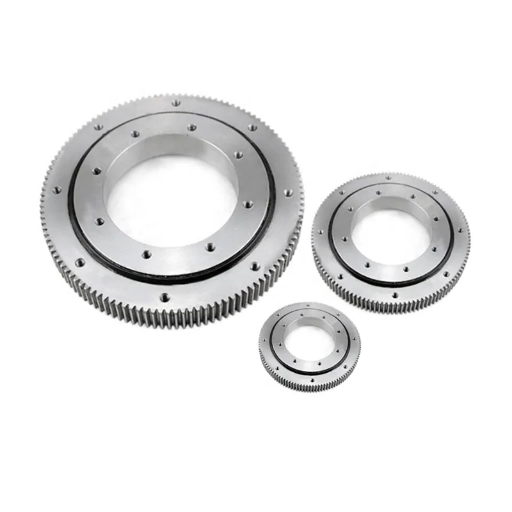
Importance of proper lubrication
Routine lubrication is critical in achieving top-level performance and durability of slewing bearings. Failing to lubricate components properly results in friction and wear, which can lead to potential breakdowns. Proper rotational lubrication also happens to protect against dust, moisture, and corrosive materials from migrating into the bearing system, which can speed up disintegration.
Studies show that around 40 percent of slewing bearing problems stem from a lack of rudimentary maintenance, supporting the need for proper maintenance work. The selected lubricant also needs to be correct because it has effective working limits like load, heat, and the speed of rotation. An example would be synthetic grease with high thermal stability recommended for turbines encountered in diverse climatic regions.
Use of the most recent monitoring technologies for injectors, condition monitoring sensors, and automatic lubrication systems can ease supervision of lubrication. These systems serve to provide accurate information on the efficiency of lubricating materials in real time alongside predictive maintenance on any system awaiting servicing. Not only do these strategies help in maximum bearing efficiency, but they also cut down bearing downtime, maintenance, and operational costs applicable to industrial installations.
Understanding wear and tear in slewing rings
Most wear and tear on slewing rings is caused by operation-induced strain, environmental considerations, lack of lubrication, and relevant fluids. Sooner or later, over excessive loading, cycles, or vibrations, material fatigue sets in, and pitting or flaking takes place on the raceways. Worse still, dirt and moisture can contaminate the bearing and speed up internal surface destruction as well as damage internal components. Systematic evaluation of these conditions is critical in avoiding failures before their due time.
In my view, regular inspections and strategic maintenance coupled with precise load calculation are the key to controlling wear and tear. Increased noise, irregular motion, temperature changes, and any other signs of added unpredictability in the corresponding parts of the system can pinpoint potential problems early on. Optimized lubrication intervals, along with the use of quality lubricants, are another focal point. Moreover, sealing or protective measures taken to guard the slewing ring contrary to external pollutants can prove beneficial.
For the assessment of this problem, advanced diagnostic tools like vibration analysis or ultrasonic testing aid tremendously. These strategies help appreciate the bearing’s condition and ease assessment, providing value-driven results. This way, I can make sure the longevity of the slewing ring is there alongside all the components with ease, making sure maintenance is productive and preserves operational readiness.
Maintenance tips for extended service
- Regular Lubrication
Slewing rings will maintain efficiency and reduce wear with proper lubrication. Use grease that complies with the manufacturer’s recommendations and is appropriate for the conditions under which it operates, including load, speed, and temperature. Grease should be reapplied at predetermined intervals and after any significant washdowns to avert contamination and corrosion.
- Preload and Torque Checks
The preload and torque of the mounting bolts connecting the slewing ring to its structure should be verified and inspected from time to time. Loose bolts will increase wear and risk operational failures because of uneven stress distribution. Loosening will lead to excessive wear and risk operational failures. Calibrated torque wrenches ensure precision with skeletal structure integrity.
- Seal Inspection and Replacement
Sealing serves as the initial level of protection against external contaminants such as moisture. Before disassembling the slewing, schedule seal inspection for cracks, wear, or missing fragments. Maintain and replace any compromised seals as they become available to spare expensive repairs later.
- Wear Pattern Analysis
As time passes, constantly scrutinizing the load-bearing surfaces, dynamic and static contact surfaces for signs of uneven wear and pitting with contact pattern match. Irregular wear is most likely caused by misalignment, lubrication insufficiency, or excessive load conditions. Rapid rectification of deviations is important to prevent mechanical failure and unanticipated breakdowns.
- Temperature Monitoring
Issues related to lubrication or excessive friction can be identified by checking the operating temperatures. Thermal sensors and infrared thermograph units should be used in operations to identify the source of excessive heat and take action on it before it becomes a large problem.
- Environmental Adaptation
Maintenance approaches should be adjusted to suit the environment in which the system operates. For instance, within marine environments, anti-corrosion treatments should have priority, and high-performance grease with anti-saltwater properties should be utilized. Environmental adaptability greatly increases the effective lifespan of assets.
If all these steps are perfectly done while adhering to the set standards, utmost efficiency from the slewing ring will be attained while also elongating its service life for an economical and efficient operation.
What are the different designs of slewing bearings?
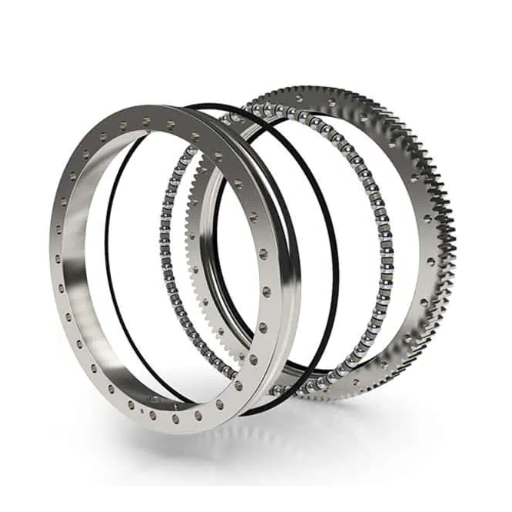
Differences between ball and roller slewing bearings
When it comes to bearings for slewing activities, ball slewing bearings are more suitable for high-speed and low-friction activities, while roller slewing bearings are better for heavy, high-load work.
| Aspect | Ball Bearings | Roller Bearings |
|---|---|---|
|
Capacity |
Moderate |
Heavy |
|
Velocity |
High |
Low to Moderate |
|
Resistance |
Low |
Higher |
|
Lifespan |
Moderate |
High |
|
Contact Type |
Point |
Line |
|
Sound |
Low |
Higher |
|
Usage |
Precision, Light-duty |
Heavy-duty, Industrial |
|
Expense |
Lower |
Higher |
|
Upkeep |
Easier |
More Demanding |
|
Examples |
Motors, Appliances |
Cranes, Excavators |
Choosing the right bearing designs for your needs
Choosing the right bearing design for any application is an essential step, as it is determined by functional requirements, engineering concerns, and even environmental conditions. Some important considerations are load capacity, speed of rotation, set dimensions, and the nature of the load, whether it is axial thrust, radial, or a moment load.
To illustrate, ball slewing bearings have an excellent fit for applications that need smooth and low-friction rotation with a moderate range of load capacities. They are often used in applications as well as light to medium duty equipment like cranes, wind turbines, and even radar systems. On the other side of the spectrum are roller slewing bearings, which are unrivaled performers in heavy radial and axial load or high moment load applications. They have become vital for construction machinery, mining equipment, and even industrial turntables. Other applications that need extreme durability and rigidity also prefer these bearings.
Also, attention to sealing systems and material compatibility should be paid. Proper seals ensure that dirt, water, and chemicals, which would greatly hinder the bearing’s performance and lifespan, do not get into the bearing. Induction hardened raceways and anti-corrosion coatings are now available in the market, which improve and simplify maintenance by increasing resilience over time. Programs such as bearing selection software and load simulation tools can add further granularity, enabling a fitting that balances performance, cost, and durability for operational requirements.
Advantages of thin-section slewing bearings
Thin-section slewing bearings are used across many industries because of their unparalleled properties and performance advantages.
- Space Saving Features and Compact Design: As with all thin-section slewing bearings, it has been optimized for lower cross-sections, which allows for compact and lightweight construction. This increases space utilization in size-constrained applications like robotics, medical devices, and aerospace technology.
- High Load Capacity: These bearings are capable of supporting substantial axial, radial, and tilting moment loads despite having a slim profile. For instance, thin-section slewing bearings, depending on series and size, can support a few hundred to thousands of Newtons of load, which helps in reducing material usage without compromising heavy-duty performance.
- Increased Accuracy and Smooth Motion Hybrid Framework: The construction of thin-section slewing bearings allows for precision in the rotary motion, which makes them extremely useful in applications that require high precision, such as radar systems or surveillance systems. Advanced manufacturing techniques minimize deviations, guaranteeing precision during operation.
- Lower Raw Material and Operating Expenses: The lightweight enables energy savings in systems where lower inertia is advantageous. Also, the usage of materials is optimized, thus adding to savings in production and shipping costs compared to conventional bearings, which have larger cross-sections.
- Application Spread in Different Fields: Thin-section slewing bearings come in single-row, double-row, or crossed roller configurations to meet varying operational needs. They are extensively utilized in renewable energy for wind turbine rotors, as well as in industrial automation and construction machinery.
Due to their lightweight and high-performance, coupled with cost effectiveness, thin-section slewing bearings are critical to modern engineering solutions where precision and reliability are needed.
How does precision affect slewing ring performance?
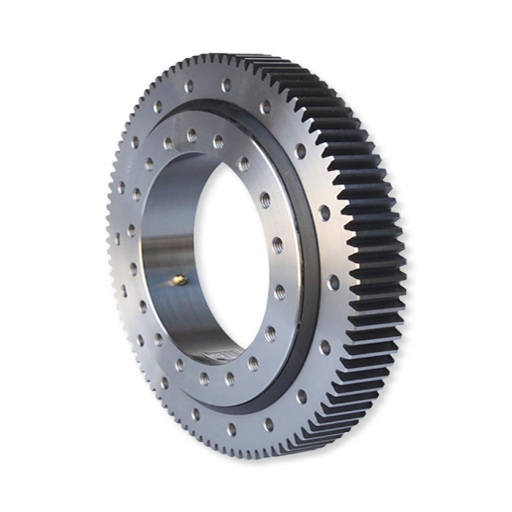
Impact of precision on efficiency and stiffness
The impact of precision on the performance attributes of slewing ring bearings is noticeable at parts efficiency and stiffness. Not unlike effortlessly gliding through the smoothest of surfaces, optimal operational capabilities are achieved easily due to high-grade materials along with tightly-toleranced manufacturing and precisely crafted components capable of greater than average capabilities. Below are five critical ways precision impacts efficiency and stiffness:
- Neglected Friction Losses: Surface discontinuities are in existence even on the smoothest surfaces. Be it propellers or bearings, with spinning elements, friction is always generated, and even with the slightest decrease in resistance, the energy-friction gets boosted and powered to new heights.
- Enhanced Load Distribution: Unlike robots, these are not diligent workers, but do not lack accuracy, allowing them to smoothen out edges with the contour of surfaces, which is immensely helpful in the case of raceways with regard to the bearing. Eliminating grid borders gave birth to surface lattice fragmentation without any trouble. This not only leads to greater efficiency, but enhanced stiffness and boundless durability under significant amounts of torque.
- Improved Rotational Accuracy: Spin control for both axial and radial shifts is vital, and superior precision guarantees that they will not go to waste due to unregulated rotations. The consistent property of an object allowing the bulk of inertia both while at rest as well as in motion, will come into play when it comes to moving equipment. A guaranteed precision when dealing with seal structures under robotics seals their fate and nears guarantees it to be right.
- Extended Service Life: Wear and tear get effortlessly reduced when it comes to internally positioned components, but the activator supporting them holds no guarantee. It all boils down to trusted precision in the sights of getting life efficiency going high, and reliability goes to the aiming point of shooting low. This, in turn, critically gives the years difference as designated by the term, not while the conditions endure harsh luminous bombardment. Maintenance at the end of all features is a significant improvement, but adds expenses when put under scrutiny.
- Cutting down on vibration and noise: Geometric deviations, or dissymmetric shapes, are remedied in precision engineering, enabling the reduction of noise and vibrations during operation. Not only does this bolster efficiency, but it also enables smoother operations, a requirement teetering on the need for precision devices or quiet environments.
This increases the importance of precision when it comes to maximizing efficiency and optimizing stiffness in slewing ring bearings. This makes precision an undeniable need during the design and manufacturing stages.
Ensuring precise manufacturing standards
An extremely precise material selection is essential to the functionality and wear-resistance of the slewing ring bearings. To accomplish this, high-grade materials should be selected carefully, fully traceable, and able to withstand stress, environmental conditions, and operational stressors. High-strength and fatigue-resistant quasi-tempered or alloy steels, to include only a few of the materials that exemplify this need. Superior performance standards are guaranteed through advanced metallurgical analysis during materials selection.
No less important is the entire machining process. CNC technology offers intricacies such as getting the geometric precision to the level of a micro grade. Other components to this precision are the races and the gear teeth. For proper functionality, high surface finishes must be attained to reduce friction during the processes. CMMs offer automated inspections for dimensional accuracy, verifying alignment on all levels, which assures us that the procedures at hand were done without offsets that might hinder optimal operational strength.
Along with this, all other procedures and processes in the fabrication cycle ought to have strict quality control as well. To detect imperfections that may be hidden, non-destructive testing (NDT) methods like ultrasonic testing and magnetic particle inspection are used to detect cracks below the surface. After the manufacturing procedure, the devices undergo rigorous load and stress testing to evaluate their integrity by replicating real-world operational conditions. These measures apply to the production of bearings to optimize performance and dependability in a variety of fields because this is the foundation of precision engineering.
Why is mounting important for slewing bearings?
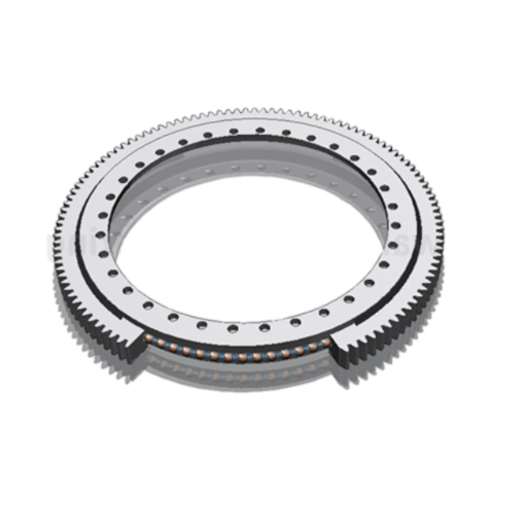
Best practices for mounting slewing rings
Appropriate mounting of slewing rings is key to optimal performance while maintaining their lifetime. Strategies should be followed that lessen mechanical stresses and ensure suitable load distribution, achieving a reduction of their useful lifespan or potential failure. A sleek bearing requires its mounting surface to be checked for flatness, stiffness, and structural soundness at the start. Over the diameter of the bearing, the ideal surface should show a flatness tolerance of ≤ 0.1 mm.
The other stage is accompanied by ensuring that all fasteners used in the installation fulfill the stringent requirements laid down by the manufacturer in material strength and size. Bolts should be tightened using a torque wrench in cross-patterns through multiple passes of increasing torque. This strategy is intended to pre-stress the bearing and avoid harsh local stress by being suspended.
Compatible lubricant application with the slew ring’s material is critical for reduced friction enhancement of corrosion resistance. To curb further operational problems for an extended duration, the bearing should be shielded from dirt, moisture, and debris using protective sealing mechanisms or covers.
Lastly, there should be no compromise on post-installation performance testing and routine maintenance checks. These checks ensure that bolts are tightened to the proper tension, lubricants are within acceptable limits, and bearing components have not surpassed set limits of wear. Thorough record keeping offers an insightful account of the bearing’s performance history, which enhances maintenance planning alongside maintenance forecasting, doing so enables efficient problem solving before system failure.
Common mounting challenges and solutions
- Misalignment During Installation
Bearings face the greatest possible challenges owing to misalignment during mounting, which often results in premature failure. Exceeding vibration, reduced efficiency, and imbalance are all consequences that can result from wear and tear. To avoid challenges, laser alignment systems, dial indicators, and other precision tools should be implemented. Additional emphasis on exact manufacturing tolerances on shafts and housings allows for achieving better alignment. Flexible applications can also benefit from using self-aligning bearings, which accommodate small angular misalignment.
- Overheating Due to Improper Lubrication
The improper application of lubricant is one way to consistently damage a bearing’s function. During and post-lubrication, the bearing will become extremely prone to failure. Lubricating with excess grease or providing none at all makes overheating certain, thus further heightening damage. Follow the provided instructions in regards to lubricant type and volume. Centralized lubrication systems are also a reliable and consistent way of delivering lubricant, meeting, and operating under extreme conditions.
- Contamination During Handling
Among other contributing factors, dust, moisture, and metal particles are highly damaging and contaminating. To ensure the work is clean, void of debris, and safe, installations should be done in controlled settings aimed towards tackling these issues. Use protective covers to further defend against contamination, which are bound to put springs and raceways at risk.
- Forceful Mounting
Excessive force, especially with the use of inappropriate tools, can cause internal cracks and deformities in the bearing during the mounting process. Specialized mounting tools like hydraulic presses, bearing heaters, and impact-free installation kits should always be used. Applying force gradually upsets the internal components safely without risk of internal damage.
- Thermal Expansion Problems
Bearings functioning in constantly changing temperatures may suffer from thermal expansion, which can lead to reduced clearance or excessive force on some parts. Selecting bearings with adequate internal clearance grades that can accommodate changes in temperature solves the problem effectively. Also, designing housing for thermal stress control provides expansion space, alleviating thermal stress.
Tackling these issues with systematic methods and modern tools greatly enhances the life and efficiency of bearings. Compliance with monitoring technologies improves their reliability while following manufacturer specifications further supplements performance.
Ensuring stability and support during installation
Proper installation procedures are essential for the enduring integrity and performance of bearing assemblies. In accomplishing this, proper alignment tools and fitting stand calibration equipment should be used to check set squares during the installation process. A base or foundation should also be rigid enough and level, not to vibrate, which may cause misalignment, giving rise to premature failure. Voids should be filled, and all necessary fasteners with their to-goes set to the values given by the manufacturer for even clamp forces.
Setting the bearings needs exceptional attention directed at external forces and loads. For instance, the set concentration distribution is aimed at eliminating concentration around particular areas of bearing surface sections. Providing proper lubrication is yet another determinant, as the set volume and grade of lubricant recommended should be adhered to in a bid to ensure the component’s rotation does not increase frictional heat.
The application of modern technologies such as laser alignment systems and vibration analysis tools gives a greater overview of the accuracy during the installation. These measures help engineers achieve proper balance and increase bearing system lifespan whilst decreasing the frequency of service checks needed.
Frequently Asked Questions (FAQ)
Q: What is a slewing ring bearing, and how does it function in power transmission?
A: A slewing ring bearing, also known as a turntable bearing, is a component designed to facilitate rotation between two structures. It consists of inner and outer concentric rings, rolling elements, and often an external gear. These bearings are versatile, allowing for rotation and precise power transmission across a range of industries and applications.
Q: What are the primary components of a slewing ring bearing?
A: The primary components of a slewing ring bearing include the inner and outer rings, rolling elements, and often an external gear. These components work together to enable rotation and support loads. The rings are designed to absorb and transmit forces while maintaining structural integrity.
Q: In which industries are slewing ring bearings commonly used?
A: Slewing ring bearings are used in a wide range of industries and applications, including construction machinery, cranes, wind turbines, and more. Their versatility allows them to be employed in any situation where rotation and load support are required.
Q: What is the significance of the external gear in slewing ring bearings?
A: The external gear in slewing ring bearings plays a crucial role in facilitating the transmission of torque. It allows the bearing to rotate under load, making it a vital component in applications requiring precise control and movement.
Q: How do slewing ring bearings accommodate distortion and load?
A: Slewing ring bearings are relatively thin but are designed to be strong enough so that, under load, they can absorb and transmit forces without distortion. This structural integrity ensures reliability and durability in demanding applications.
Q: What advantages do slewing ring bearings offer in terms of mobility and transport?
A: Slewing ring bearings offer significant advantages in mobility and transport by allowing large structures to rotate smoothly and efficiently. This makes them invaluable in applications where precise movement and positioning are critical, such as in cranes and large machinery.
Q: What are the common challenges faced in the use of slewing ring bearings?
A: Common challenges include ensuring that the structure is sufficiently robust to handle the intended load and that the bearings are properly maintained to avoid premature wear or failure. Regular inspection and adherence to manufacturer guidelines can help mitigate these issues.
UCTH213-40J-300 with Setscrew(inch)
CNSORDERNO: Normal-duty(2)
TOGN: UCTH213-40J-300
SDI: B-R1/8
SD: 2 1/2
UCTH212-39J-300 with Setscrew(inch)
CNSORDERNO: Normal-duty(2)
TOGN: UCTH212-39J-300
SDI: B-R1/8
SD: 2 7/16
UCTH212-38J-300 with Setscrew(inch)
CNSORDERNO: Normal-duty(2)
TOGN: UCTH212-38J-300
SDI: B-R1/8
SD: 2 3/8
UCTH212-36J-300 with Setscrew(inch)
CNSORDERNO: Normal-duty(2)
TOGN: UCTH212-36J-300
SDI: B-R1/8
SD: 2 1/4
UCTH211-35J-300 with Setscrew(inch)
CNSORDERNO: Normal-duty(2)
TOGN: UCTH211-35J-300
SDI: B-R1/8
SD: 2 3/16
UCTH211-34J-300 with Setscrew(inch)
CNSORDERNO: Normal-duty(2)
TOGN: UCTH211-34J-300
SDI: B-R1/8
SD: 2 1/8










